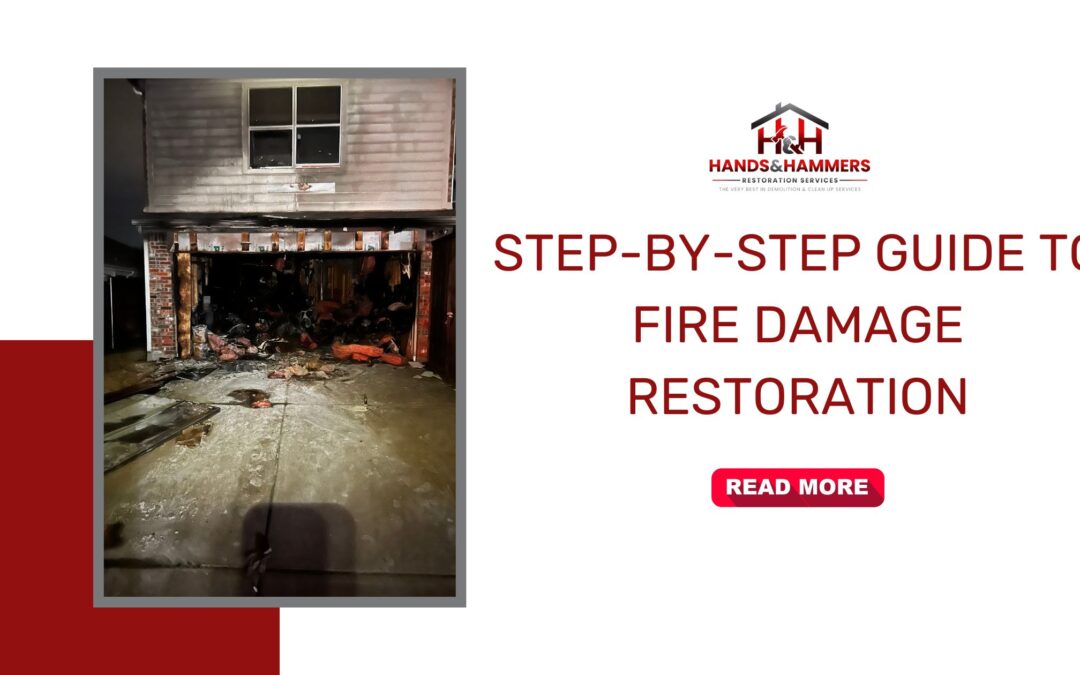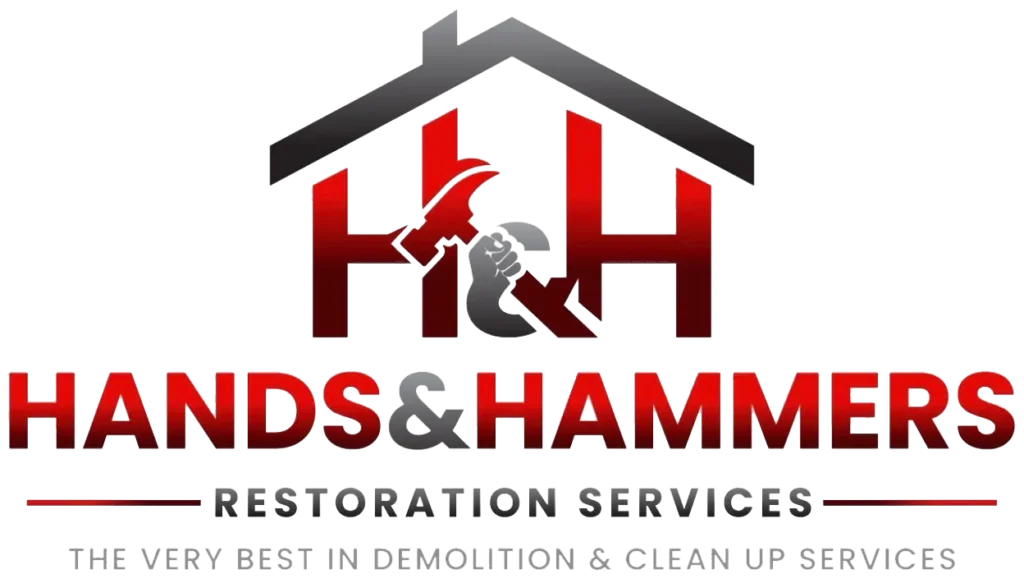- Fire damage restoration involves more than cleanup—it requires assessing structural damage, removing water, and addressing smoke, soot, and chemical residue to prevent long-term harm.
- Professionals follow a step-by-step process: inspecting the property, securing it, drying out moisture, deep cleaning, restoring personal belongings, and rebuilding damaged structures.
- Restoration teams not only repair your home but also help recover valuables, eliminate health risks, and ensure your space is safe, clean, and livable again.
A house fire leaves more than ashes behind. It brings chaos, confusion, and a long list of decisions. After the flames are out, the real work begins. Smoke lingers. Soot settles in places you didn’t think fire could reach. What comes next can feel overwhelming. But there’s a way forward.
Knowing the right steps can make the process easier. This guide will help you understand fire damage restoration from start to finish. You’ll learn what happens, why it matters, and how professionals handle each phase. Let’s walk through the process and break it down clearly.
What is Fire Damage Restoration?
Fire damage restoration is repairing and rebuilding a property after it has been damaged by fire, smoke, and water. When a fire burns through a space, it doesn’t just scorch surfaces. Smoke, soot, and water from fire hoses can make things worse.
Restoration work involves more than surface cleaning. Walls might need deep cleaning, flooring could be removed, and damaged wiring may be replaced. If left untreated, smoke can continue causing problems long after the fire is gone.
Professionals in this field know how to handle both visible and hidden damage. They also help prevent long-term issues like mold growth or structural weakening. The process includes assessment, cleaning, repairs, and sometimes reconstruction.
It’s not a simple clean-up job. It requires tools, experience, and knowledge of building systems. Most people can’t tackle this alone, especially after a fire. That’s where a trained restoration team steps in.
Types of Fire Damages
A fire brings more than heat — it brings smoke, soot, and sometimes water or chemical damage from firefighting efforts. Every part of the fire leaves a different mark, and each type of damage needs its kind of repair. That’s why knowing what kind of fire damage you’re dealing with is the first step to restoring your space.
Let’s look at the major types of fire damage you might face:
Flame Damage
Flames destroy things fast. They burn, melt, or weaken anything they reach. Some items turn to ash, while others suffer surface burns. Wood structures, drywall, and insulation can lose strength even if they don’t collapse. If fire weakens the structure, it may not support weight or resist pressure. Crews often remove and replace those parts during the restoration process.
Smoke Damage
Smoke sticks to walls, ceilings, furniture, and personal items. It causes discoloration and creates a strong odor that lingers. If wood or paper burns, the smoke leaves dry, dusty particles. If plastic or rubber burns, the smoke becomes greasy and thick. This residue gets deep into fabrics and porous materials. Cleaning must happen fast to stop the smell and prevent permanent stains.
Soot Damage
Soot spreads across surfaces as a powder or oily film. It comes from incomplete burning. If the fire burns synthetic materials, the soot becomes sticky. If it burns natural items, it stays dry. Oily soot damages electronics and stains walls. It also carries acidic properties that corrode metal and eat away at paint. Leaving it for a short time can make cleaning much harder and raise repair costs.
Heat Damage
High temperatures from a fire distort and weaken many parts of a structure. Instead of remaining firm, metal warps and loses its original shape. Wooden structures, especially those that bear weight, often twist, split, or develop deep cracks, reducing their ability to support the load.
Paint, when exposed to intense heat, blisters, bubbles, and begins to peel off, revealing the compromised surface beneath. Even if a surface looks solid after a fire, the heat may have weakened it from the inside.
Restoration professionals examine walls, ceilings, and structural supports closely to detect hidden heat damage and replace the affected sections before reconstruction begins. Ignoring this step increases the risk of future issues, such as collapse or material failure.
Water and Chemical Damage
Water and foam used to fight fire often soak into walls, flooring, and furniture. This moisture warps wood, damages drywall, and ruins fabric. If you don’t remove it fast, mold can start to grow. Firefighting chemicals may leave behind a powdery or sticky residue. These chemicals damage electronics, appliances, and painted surfaces if not cleaned quickly. Restoration crews use special equipment to dry and treat the affected areas.
Charring
This happens when the fire blackens a surface but doesn’t burn it fully. Light charring may not affect strength. Crews can sometimes sand down and reuse slightly charred wood. But deep charring makes the wood brittle and unsafe. If the wood can’t carry weight or has lost shape, teams remove and replace it to keep the building safe.
Damage from Smoke and Moisture Mixing
Smoke and moisture combine to create a sticky, black sludge. This mix spreads quickly and clings to everything. It penetrates surfaces and leads to staining, corrosion, and even decay. Walls, vents, fabrics, and wooden parts all absorb this residue. It’s hard to remove without commercial tools and can spread bacteria or toxins if left alone.
Steps to Restore Fire Damage

Restoring a fire-damaged home isn’t done overnight. There are several steps involved. Each one has to be done in the order.
Step 1: Inspect the Property and Eliminate Safety Risks
Restoration crews start by inspecting the entire property. They examine walls, ceilings, floors, and foundations to locate every trace of fire, smoke, and water damage. They look for structural risks like sagging roofs or collapsed supports. When they find exposed wires or unstable areas, they stabilize the site immediately.
They also check for invisible dangers, including hidden moisture or contaminated air. Their assessment includes burned sections and areas affected by smoke or firefighting efforts. After collecting all the data, they create a plan that outlines the tools, tasks, and timeline. This approach gives the project structure and keeps everyone safe.
Step 2: Secure the Property from Further Harm
After inspecting the damage, the team protects the home from outside threats. They board up shattered windows, cover roof openings with tarps, and lock all entry points. This step keeps out animals, bad weather, and trespassers.
They also create clear paths for their crew by clearing debris and placing signs where needed. This preparation ensures that no one faces unexpected hazards during the cleanup. By controlling the site environment, they prevent additional damage and make sure the restoration runs smoothly from the start.
Step 3: Remove Water and Begin Drying
Restoration teams bring in heavy-duty pumps and vacuums to remove standing water from the building. They act quickly because water can seep into walls, subfloors, and ceilings within hours. As soon as they eliminate the visible water, they switch to industrial dryers and dehumidifiers.
They scan every surface using moisture meters to detect hidden dampness. If they find any, they continue drying until the levels return to normal. This process blocks mold, mildew, and rot from developing. They don’t leave moisture behind because even a small pocket of water can lead to future problems.
Step 4: Clean Smoke and Soot from All Surfaces
The team uses specialized sponges and cleaners to remove soot and smoke stains from walls, ceilings, floors, and furniture. They scrub every affected surface, even in rooms where flames never reach. Smoke moves quickly, and even untouched areas can carry strong odors and sticky residue.
They run air scrubbers and ventilation systems to clean the indoor air. They open and clean HVAC ducts so that particles don’t recirculate throughout the home. They apply deodorizing treatments to eliminate odors at the source. By cleaning deep into the structure, they restore both the smell and safety of the space.
Step 5: Clean, Sort, and Inventory Personal Items
The team sorts every personal item into categories: cleanable, restorable, and non-salvageable. They document everything for insurance purposes, including photos and notes. They clean electronics, furniture, clothing, and even artwork with tools designed for delicate materials.
They decide what to clean on-site and what to send to an off-site content cleaning center. They pack items securely and transport them with detailed records. Their process protects sentimental items and maximizes the chances of full recovery.
Step 6: Repair Structural Damage and Rebuild
Contractors and technicians rebuild the damaged structure step by step. They replace drywall, install new flooring, and repaint walls to match the original style. Electricians and plumbers inspect and repair all damaged systems. They restore power, water, and heating so that the home becomes functional again.
They follow code requirements and pass all inspections before closing any walls. They work closely with homeowners to make design choices and keep the rebuild on schedule. As the project nears completion, they make final adjustments to ensure safety and comfort. The home doesn’t just return to its old form—it becomes stronger, cleaner, and ready for a fresh start.
Fire Damage Restoration FAQ
Now you know how fire damage restoration works and what it involves. Still, some things may not be clear. Here are some common questions people ask after a fire—and straight answers to help you move forward.
1. How Long Does Fire Damage Restoration Take?
The timeline depends on how much was damaged. A small kitchen fire may take a week to clean and repair. A major house fire can take several months. Factors include the level of smoke damage, water removal needs, and how much of the structure must be rebuilt. Delays can happen if permits are required or if materials are on backorder.
2. Can I Stay in My Home During the Restoration?
It depends on the damage. If only one room was affected, and the rest of the home was safe, you might be able to stay. But if there’s smoke throughout the house, or if the air is unsafe to breathe, temporary relocation is the best option. Restoration teams can help set up safe access if needed.
3. What Should I Do Immediately After a Fire?
Call your insurance provider. Then contact a licensed fire damage restoration company. Avoid entering the home unless fire officials say it’s safe. Don’t try to clean soot or wash walls yourself. Smoke and soot particles can spread and cause more harm if not handled properly.
4. What Items Can Be Saved After a Fire?
Clothing, furniture, and electronics might be saved depending on how close they were to the fire. Smoke and soot can be cleaned from many surfaces using the right tools. Paper items like books and photos are harder to restore but sometimes salvageable. Restoration teams sort, clean, and pack items for return or disposal.
5. How Can I Get Rid of the Smoke Smell?
The smoke smell is tough to remove. It clings to fabrics, walls, and vents. Restoration crews use ozone machines, thermal foggers, and special cleaners to treat the smell. Air ducts are cleaned to stop the smell from spreading again. Deodorizing is one of the last steps in the process.
Overwhelmed by what comes after the fire? At Hands & Hammers Restoration Services, we guide you through every step of fire damage restoration—so you don’t have to face it alone. Contact us today to get expert help, a fast response, and a team that’s ready to bring your home back to life.


